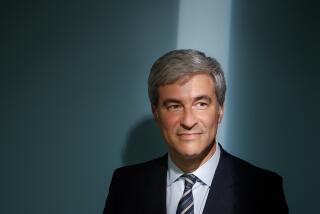Column: You can shop at LACMA but you can’t see the art: Why museums must reopen
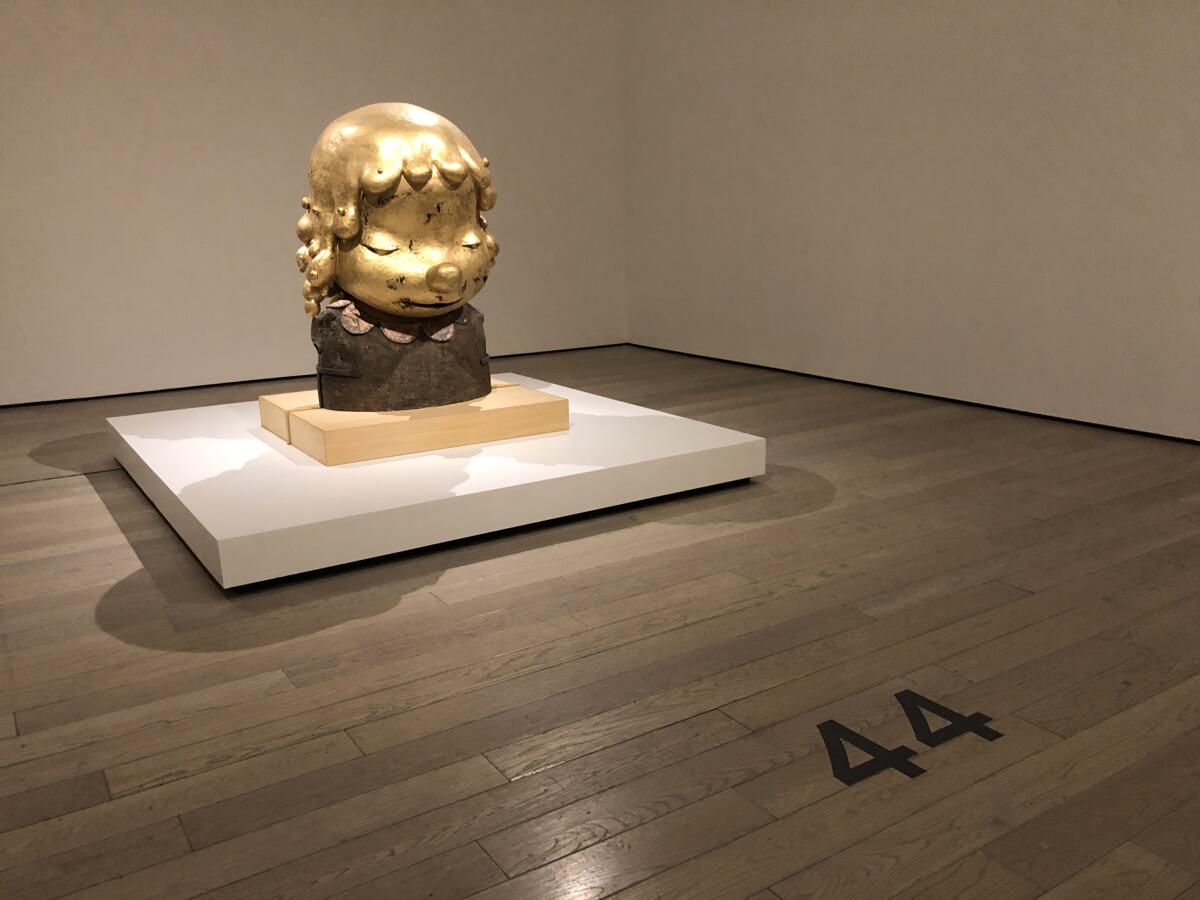
- Share via
If you try to visit the Los Angeles County Museum of Art this week, you can enter the Resnick Pavilion and browse its gift shop, where you might peruse one of several catalogs featuring the work of Japanese artist Yoshitomo Nara, who is currently the subject of a major retrospective at the museum. You can also pick up one of several Nara-designed skateboard decks, Nara T-shirts and Nara colored pencil sets. While you’re at it, don’t forget the Nara disposable bandages. (Only $12!)
What you cannot do is see the Nara exhibition in the BCAM building across the way. Nor can you view any of the exhibitions currently installed inside the Resnick Pavilion, which include a show of photography by Vera Lutter, which chronicles LACMA’s now-demolished east campus, and an architectonic installation by Korean artist Do Ho Suh.
If you are crafty, though, you can catch a glimpse of Suh’s ethereal installation of a New York apartment rendered out of translucent polyester on your way to the gift shop. You can also ogle Mark Bradford’s large-scale painting “150 Portrait Tone,” because it sits, unavoidably, in the Resnick’s lobby.
Our vigilance toward reopening malls amid COVID-19 should be accompanied by a willingness to adapt museums to have visitors again as well.
This conundrum comes courtesy of Gov. Gavin Newsom and the great state of California, which has declared that indoor retail and personal care locations (such as nail salons) can reopen at 25% capacity now that coronavirus infection rates have begun to decline, but museums must remain shut.
This means a museum’s retail store can open to the public but the museum itself cannot. So LACMA can open its Resnick Pavilion gift shop but not the galleries within the same Resnick Pavilion — even though the two share a front door and a ventilation system. The same goes at the Huntington Library, Art Museum and Botanical Gardens, where you may visit the gardens with an advance reservation, then mill around the indoor gift shop at your leisure.
But the art galleries? Strictly off-limits.
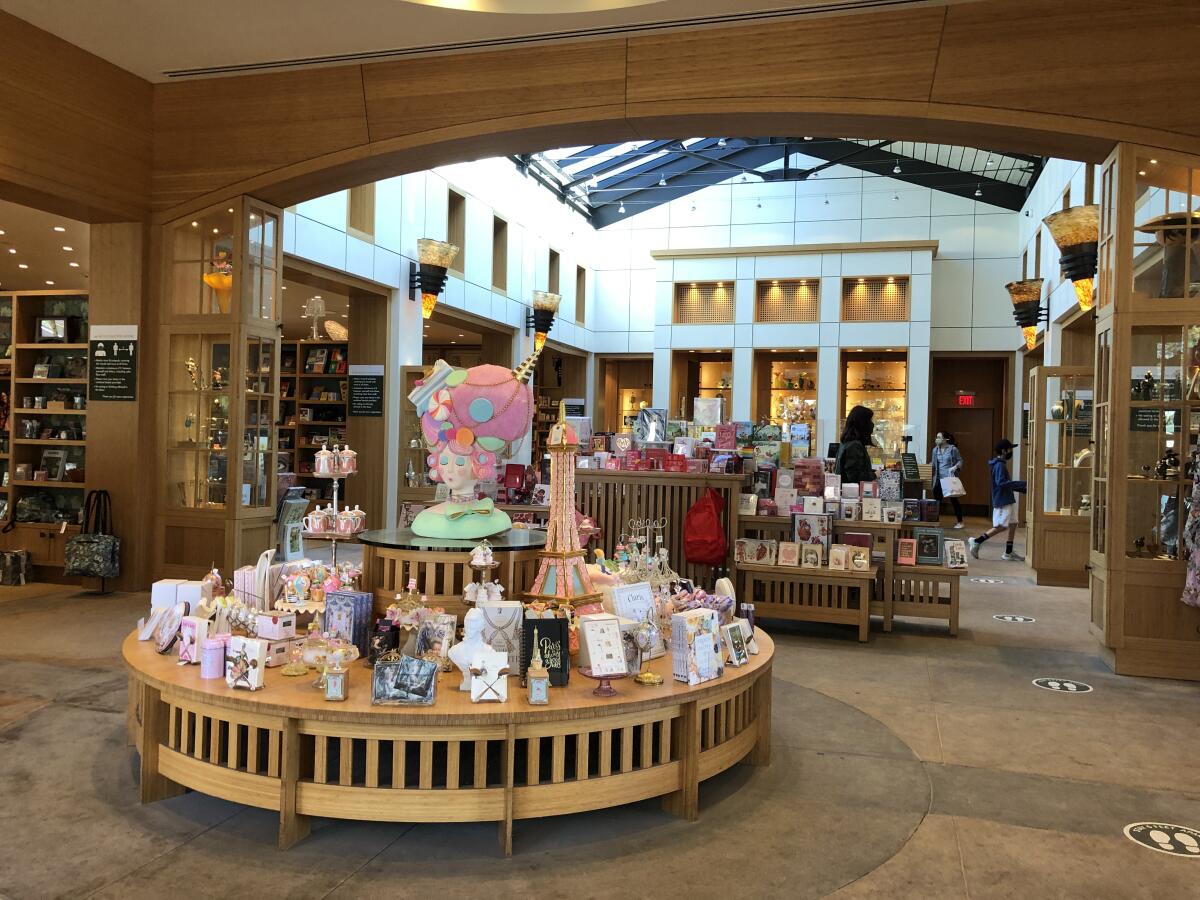
The conundrums don’t end there. As the New York Times’ Robin Pogrebin noted in a report about how L.A. museums are being affected by the pandemic, the Museum of African American Art, which is located inside a Macy’s store at the Baldwin Hills Crenshaw mall, is closed. The Macy’s, however, is open for business!
As are most L.A. art galleries, which count as commercial retail spaces and are therefore open to the public. The state’s rationale for allowing galleries to remain open, as outlined by the Los Angeles Times editorial board last fall, is that galleries are smaller than museums (presumably making them less likely to be centers of contagion). Obviously, state health officers have never been to a mega gallery like Hauser & Wirth, which is not only much bigger than a breadbox but also is bigger than the Grand Avenue location of Los Angeles’ Museum of Contemporary Art.
It’s absurd.
The wildly uneven criteria speak more to the powerful, well-funded lobbies helping shape public health policy than to anything resembling science or even common sense. (It was, after all, an email from the California Restaurant Assn. that first tipped off Californians — including many public officials — that the governor was about to lift his stay-at-home order.)
At a moment in which it is possible to get a tattoo or paw the goods at Chanel in Beverly Hills, it should be possible to visit a museum. Period.
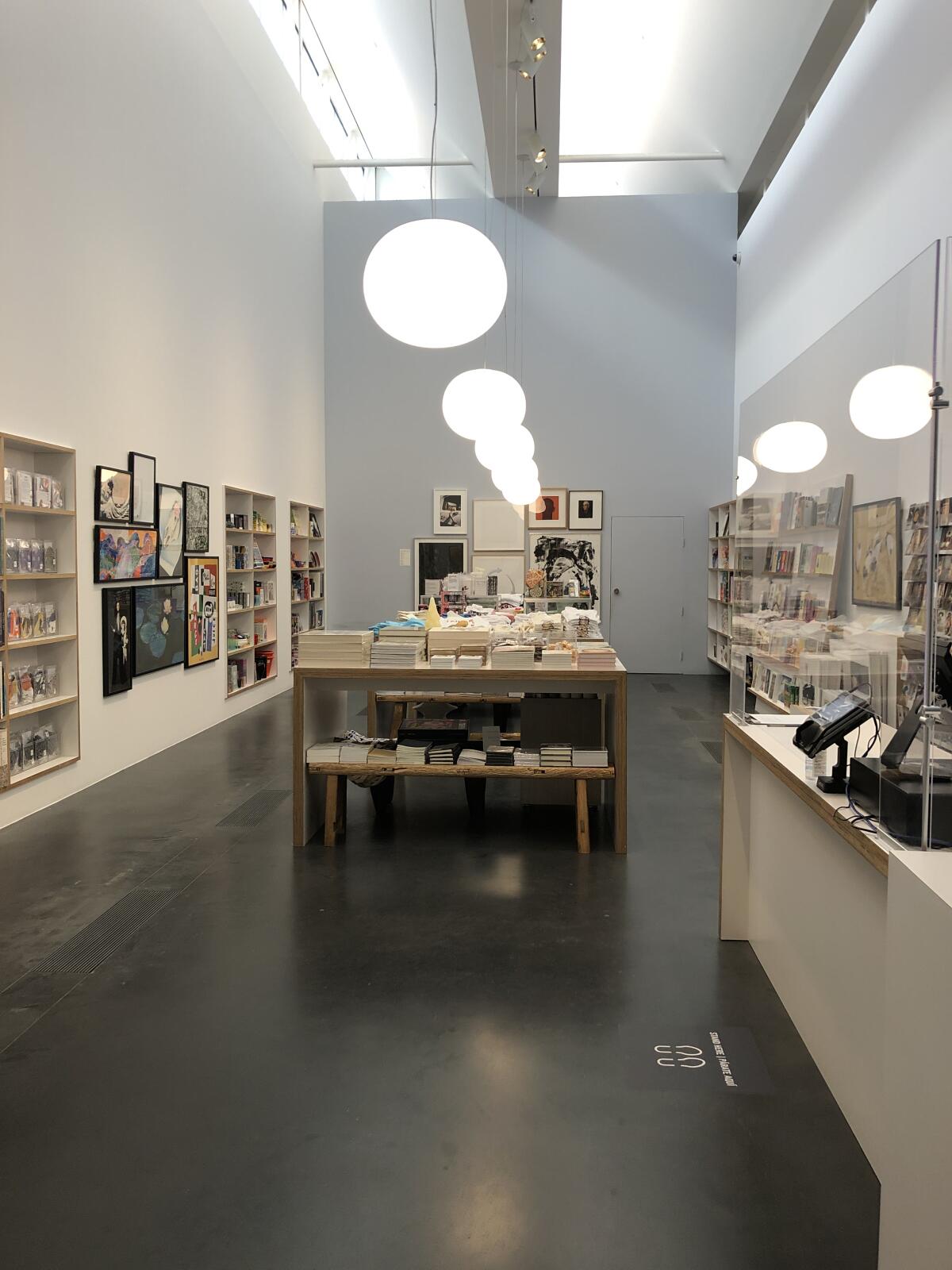
I say this with some hesitancy and a mountain of addendums, provisos and quid pro quos.
I am highly wary of COVID-19 and the toll it has taken on my colleagues, neighbors and extended family members. I don’t eat out. I double mask. I always have hand sanitizer at the ready. I worry about needlessly exposing essential workers — workers I count as my friends and my family. And I’m wary of letting our collective guard down just as variants from around the world begin to materialize all over the U.S.
But the state regulations as they stand make ... Absolutely. No. Sense.
Museums are highly controlled, no-touch environments on an ordinary day. (Like, just try stepping too close to that Roman bronze.) With COVID-19 controls in place, even more so.

On Wednesday afternoon, I paid a visit to LACMA to see how the museum might handle visitors with pandemic protocols in place. What I found was an institution that has rethought the ways in which the museum space is navigated.
A sign in the parking lot directs those who are able to take the stairs rather than the elevator. Building entryways have been equipped with no-touch sensors so that visitors can open a door with a wave of a hand. To guide visitors through the galleries in an orderly fashion, the floors have been clearly marked with large numbers. These are often much more than six feet apart, to allow a household or pod to comfortably proceed through the gallery.
In addition, didactic elements, such as wall text, have been minimized to avoid bottlenecks. Instead, these can be accessed online via smartphone.
Before visitors even set foot in a museum building, they must fill out an online screening form and agree to a temperature check.
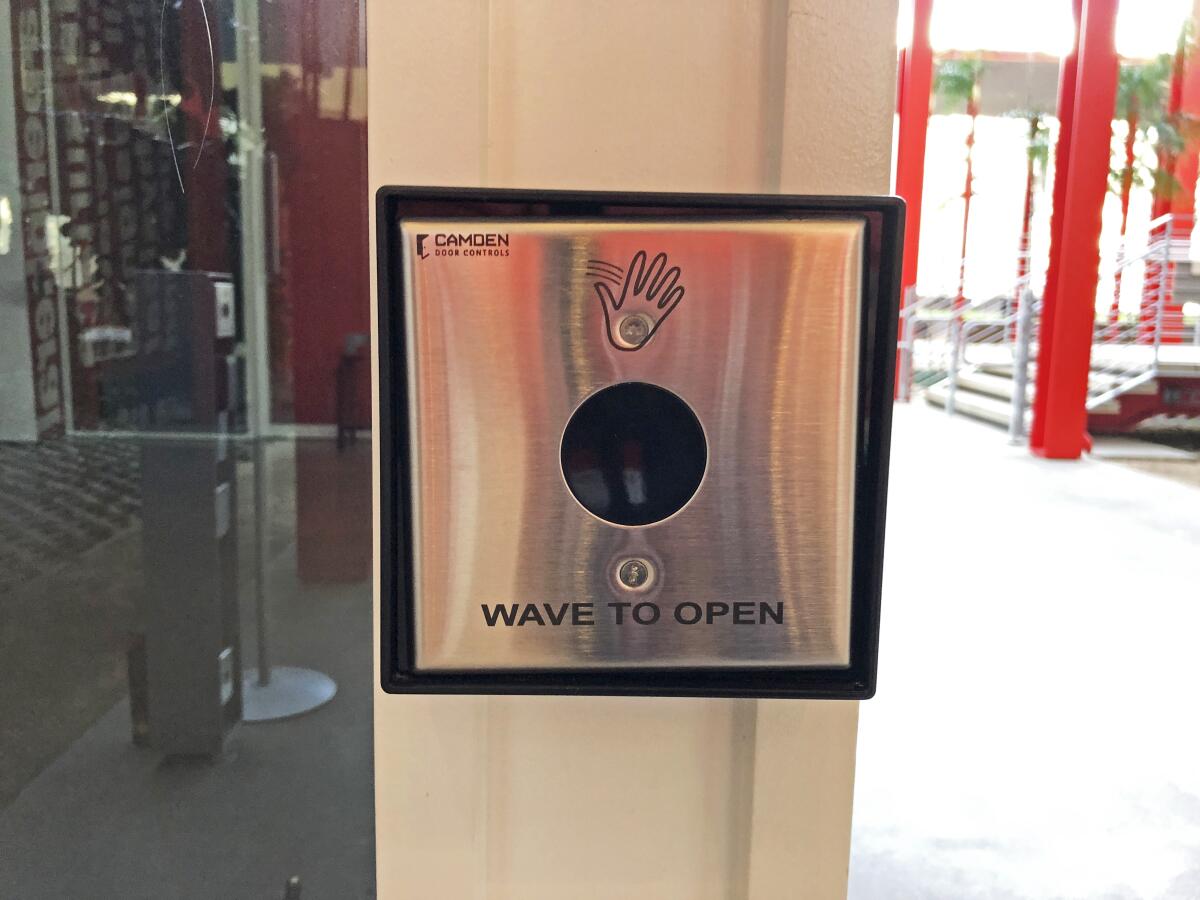
LACMA isn’t the only museum that has done this.
At the Getty, a COVID task force has been working on reopening measures for the last 10 months. It has created a new way of loading and unloading passengers on the tram system to ensure minimal contact and instituted a system of one-way routes through the galleries. The cafe will supply carryout food that can be eaten around the grounds.
At the Hammer Museum, one-way routes will be marked through the galleries and visitors will be limited to just 40 per hour across the museum’s 120,000-square-foot facilities. That’s about the size of a Home Depot. And no Home Depot I’ve been to during the pandemic has put those sorts of restrictions on access to space.
At all of these museums, advance reservations and masks would be a must. And all would operate at partial capacity. Given existing state regulations, that would likely be a maximum of 25%. Currently, the Huntington requires advance reservations, a temperature check and a mask in order to visit its outdoor spaces. Capacity is limited to 50%.

After my visit to LACMA on Wednesday, I hightailed it to the Grove, where indoor establishments have severely restricted capacity, yet it’s still possible to amble around and touch merchandise at Sephora, the Alo Yoga boutique or Dylan’s Candy Bar and then dine maskless on a restaurant terrace.
How is any of that safer than going to a museum? A place where you don’t touch anything and you don’t remove your mask? And in what world is Dylan’s Candy Bar — a treacly, wallet-cleaning scourge aimed squarely at tourists — more essential than the local museum?
It all comes down to the industries that have the financial muscle to change Gov. Newsom’s mind. And currently, the culture industries are not it. Never mind all that talk we kept hearing about L.A. being the art capital of the universe.
Part of Newsom’s stated concern is that museums will draw visitors from outside the immediate area, which could lead to increased transmission. But as The Times noted in an editorial in October, museums such as LACMA, the Autry Museum of the American West and the Natural History Museum in Exposition Park draw the vast majority of their visitors — two-thirds to 70% — from the county. If they’re so worried, writes the editorial board, “State officials could always impose a requirement that museums open only to that county’s local residents.”
Go figure. When you’re the government, you can govern how openings are implemented. Or simply let the California Restaurant Assn. know and they’ll tell the rest of us.
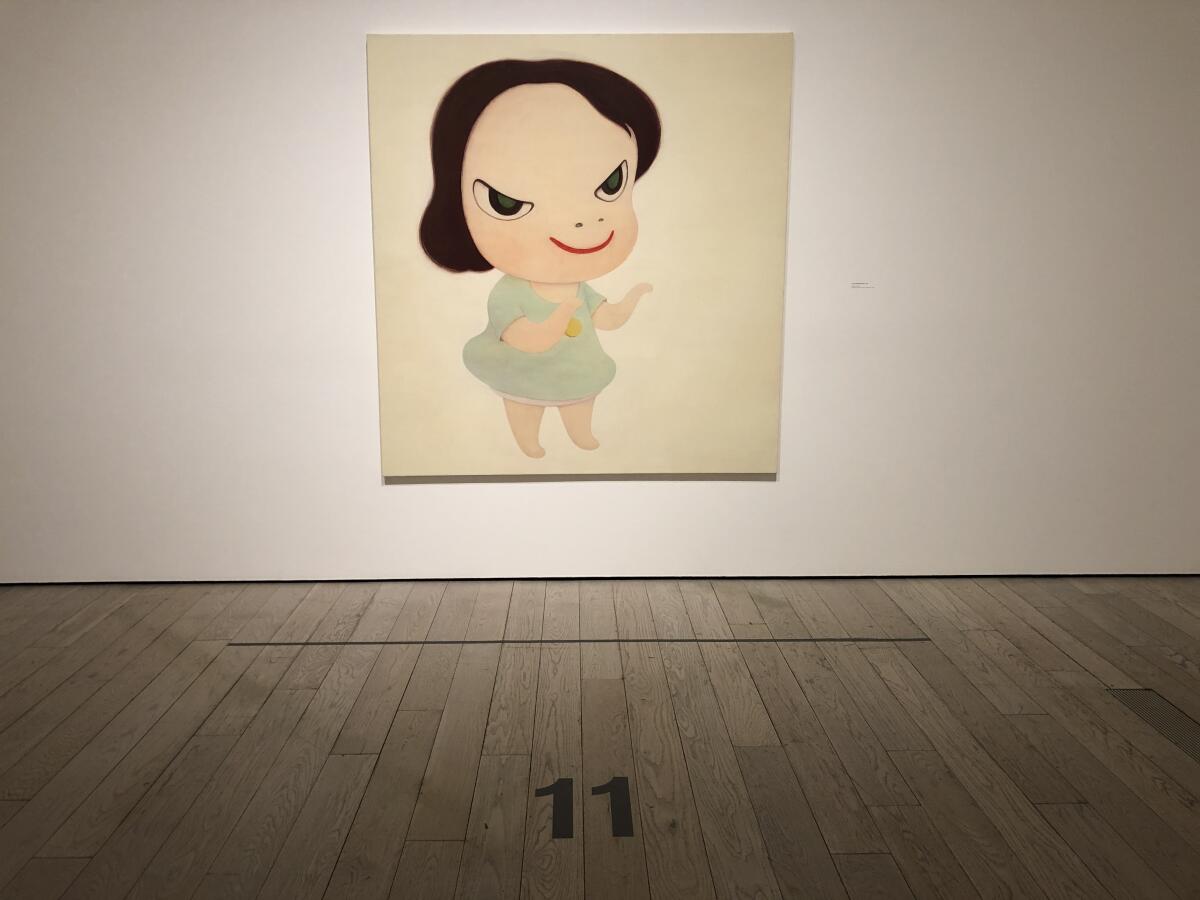
Part of my previous hesitancy in arguing for museum reopenings is that just because everyone else is doing something, it doesn’t make it the right or the smart thing to do.
Moreover, a lot of reopening measures have focused more on the business’ client experience than the staff‘s safety.
As Sacramento has churned out rules related to reopenings, it is poorly paid frontline workers who have taken on the additional burden of serving as enforcers. In the case of museums, will guards be provided with gear? Will they be supported when recalcitrant visitors refuse to don masks? Will they receive paid sick leave if they fall ill? Will they receive similar recompense if they are part-time workers?
These are critical questions for museum leaders who are champing at the bit to reopen.
At the Museum of Contemporary Art in L.A., Klaus Biesenbach will shift to artistic director and will be joined by a new executive director.
But museums already have a model they can point to: art galleries.
Throughout the pandemic, I have regularly visited galleries and always felt secure doing so. Masks are required. Sanitizer is provided. Visits are by appointment, and the flow of people is heavily staggered. If galleries have figured out how to make art viewing safe, then surely museums can too.
Besides, if Dylan’s can ply overpriced lollipops in the middle of a pandemic, then let me have at Georges de La Tour’s “Magdalen.” I need my eye candy too.
More to Read
The biggest entertainment stories
Get our big stories about Hollywood, film, television, music, arts, culture and more right in your inbox as soon as they publish.
You may occasionally receive promotional content from the Los Angeles Times.



